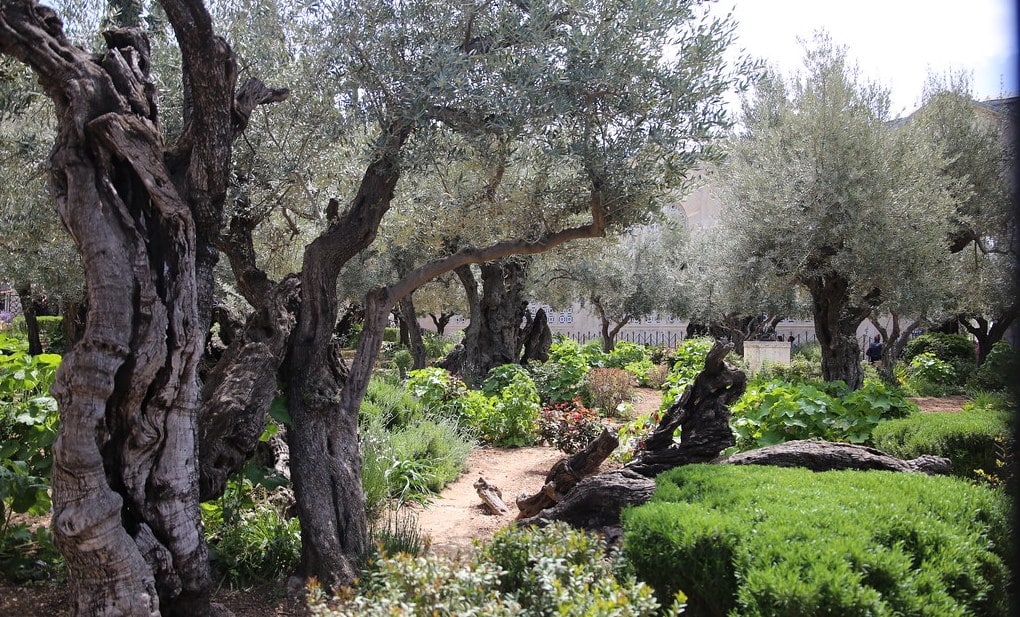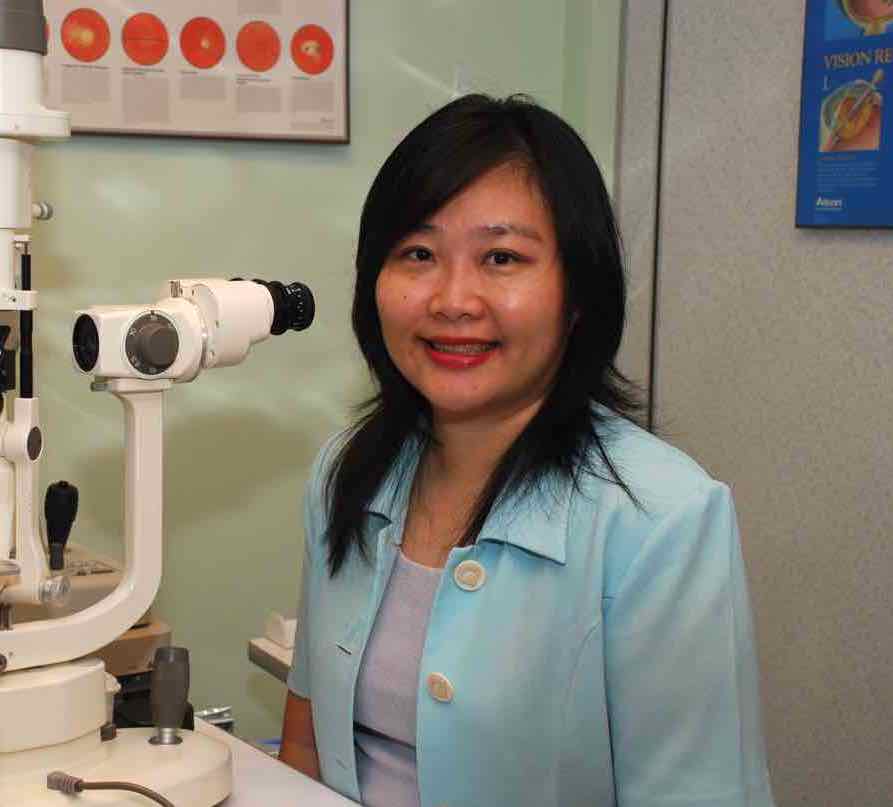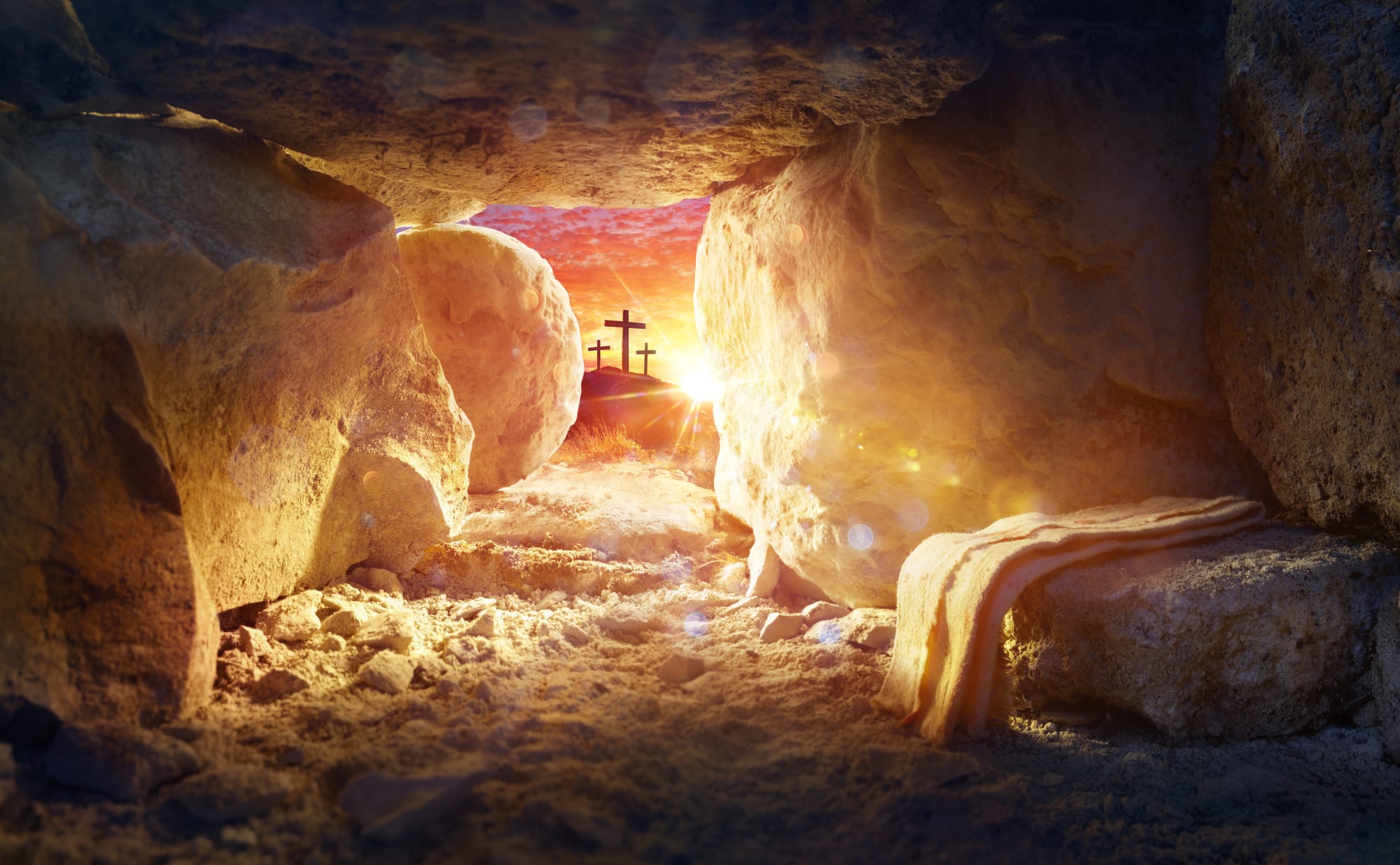What do gardens have to do with Easter and Good Friday?
Jesus died so we may have life. This Good Friday, Salt&Light invites you to find out more about the abundant life Jesus freely offers us.
Dr Ang Chin Sim // April 13, 2022, 7:27 pm

In the Garden of Eden, the first Adam was overcome by sin, in the Garden of Gethsemane, the last Adam, Jesus overcame sin. Photo by David Sivyer on Flickr.
Gardens are inspiring places!
How many of you love gardening? Whether you are an avid gardener, dabble a little with gardening or obtain vicarious pleasure from gardens created by others, there is something about gardens that refreshes our souls and invites us to commune with nature.
It is interesting to see how human life started in a garden and will also culminate in a garden.
In this meditation for the upcoming season of Easter, we see four gardens in the Bible where important events took place: The Garden of Eden, the Garden of Gethsemane, the Garden Tomb and the Garden City of Eternity.
The Garden of Eden
God is a Gardener. If we revel in the beauty of nature in this fallen world, it is mind-blowing to conjecture how beautiful the Garden of Eden was at Creation.
He planted the Garden of Eden and placed Adam and Eve there. The Hebrew word “eden” means “luxury, pleasure or delight”.
There is something about gardens that refreshes our souls and invites us to commune with nature.
Adam and Eve didn’t need to toil and sweat to pull out weeds or dig hard earth to plant greens. God had done everything to provide a lush utopia of fruit trees, vegetation and rivers: It was theirs to enjoy and steward.
But there came a usurper into the garden.
Satan the deceiver planted seeds of doubt into Eve’s mind. He made her question whether she should eat the fruit from the tree of the knowledge of good and evil. This was the only tree in the garden which God commanded Adam and Eve not to eat from. But Eve ate the fruit and gave some to Adam as well (Genesis 3:2-6).
Immediately everything changed. Their eyes were opened and they felt ashamed of their nakedness (Genesis 3:7). They hid from God in fear when He sought them out in the cool of the day.
God being a righteous God, had to pass judgement on Satan, Eve and Adam. Due to disobedience they were banished from the Garden of Eden. However in God’s graciousness, the seed of redemption had been already put into place (Genesis 3:15).
The Garden of Gethsemane
Fast forward to the New Testament. Jesus became the fulfilment of the Promised Seed, mentioned in Genesis 3:15. All the time He was on earth, His life was gearing up in preparation for the day of crucifixion where He would pay the ultimate price for our sins.
Human failure took place in a garden but so did redemption.
Following the last supper, Jesus took three of His closest disciples – Peter, James and John – to the Garden of Gethsemane so that He could pray (Matthew 26:36-37).
Jesus was in great distress and agony. He asked his disciples to keep watch as “My soul is overwhelmed with sorrow to the point of death” (Mark 14:34). His sweat was like drops of blood falling to the ground (Luke 22:44).
This condition is known medically as hematohidrosis, where capillaries (thin blood vessels) can break and the blood can be squeezed out through the sweat glands. This can be caused by extreme distress or fear, such as facing death, torture or severe ongoing abuse.
Why did this take place in a garden?
Perhaps it is symbolic: Human history started in a garden. While human failure took place in a garden, human redemptive history eventually culminated in a garden.
In the Garden of Eden, the first Adam was overcome by sin; in the Garden of Gethsemane the last Adam, Jesus, overcame sin. In Eden, the first Adam fled from God; in Gethsemane, Jesus the last Adam, presented Himself to the Father.
Crushed in the oil press
Into the Garden of Gethsemane, a betrayer came: Judas arrived with soldiers, high priests, the Pharisees and servants (John 18:1-5). The prearranged signal of a kiss by Judas identified Jesus as the one to be arrested. He was eventually taken to Pontius Pilate while the disciples scattered in fear.
The modern day Garden of Gethsemane is an urban garden located next to the Church of All Nations. It contains eight olive trees of impressive size and appearance, with a rock lined pathway meandering through.
While we shudder at these dark, terrifying events that took place, it was part of Jesus’ journey and a necessity.
The name is derived from the Aramaic (gaḏ-smane), meaning “oil press”.
In those days, the value of an olive lay in its oil. To obtain oil, an oil press had to be used to crush olives. The oil that comes forth is valuable for cooking as well as for applying on one’s skin.
This is reminiscent of Isaiah 53:5 where Jesus was crushed for us:
“But he was pierced for our transgressions,
he was crushed for our iniquities;
the punishment that brought us peace was on him,
and by his wounds we are healed.”
The events in the Garden of Gethsemane have reverberated down subsequent centuries and have been depicted in music, books and films. Bach wrote two oratorios based on accounts of Matthew and John. The Passion of Christ is a modern day film that reflects this as well.
While we shudder at these dark, terrifying events that took place, it was part of Jesus’ journey to the cross and a necessity for Him to pay the price for us.
The Garden Tomb
Jesus was put on trial six times by various factions, following which He was sentenced to be crucified (John 19:16). He went out to the place of the Skull (called Golgotha in Aramaic), in the northernmost part of the mountain called Moriah. This is the same region that Abraham brought his son Isaac to sacrifice him as told in Genesis 22.
This was foreshadowing what would follow of the perfect sacrificial Lamb – God’s own Son, Jesus Christ.
Following Jesus’ death on the cross, Joseph of Arimathea asked for permission to take Jesus’ body to place in a new tomb inside a garden at the place where Jesus was crucified (Matthew 27:57, John 19:41).
There is a current spot in Israel, considered by some to be the Garden Tomb. It has been the focus of Christian worship and prayer for over 120 years, featuring an ancient Jewish tomb, a garden and a water cistern.
This garden is located outside the city walls of Jerusalem, near the Damascus Gate and stands in the shadow of Golgotha (Skull Hill).
Women who came the morning after His burial, wanting to anoint the Lord with spices, found that the stone covering the tomb had been rolled away.
In the Garden Tomb, Jesus’ burial took place, and so did His resurrection!
Death was swallowed up in victory and He crushed the serpent’s head, fulfilling the promise that God made in the Garden of Eden. He did it all for us, so that we can live in the Garden of Eternity.
Garden City of Eternity
Jesus had gone ahead to prepare an eternal dwelling place in heaven for those who believe in Him. (John 14:1-4)
Heaven’s garden city will be a paradise, surpassingly more beautiful than we can ever conceive or imagine. (Revelation 22:1)
What glimpses do we have of heaven?
Here’s what it says in the book of Revelation: “Whoever has ears, let them hear what the Spirit says to the churches. To the one who is victorious, I will give the right to eat from the tree of life, which is in the paradise of God.” (Revelation 2:7)
The word “paradise” (pairaidaēza) means “a walled garden”. Persian kings would bestow honour on a guest by taking them for a walk in their walled garden. That person becomes a companion of the king by walking with him in the garden.
The curse that was placed in the Garden of Eden has been lifted by Jesus’ suffering (Garden of Gethsemane), death and burial (Garden Tomb), and following His resurrection, He is preparing our places in the Garden City of Heaven.
Paradise was lost in the first garden; paradise will be restored in the eternal garden.
Jesus invites those of us who will believe to His home in paradise. It’s a place of no more sorrow, tears and mourning.
The thief hanging on the cross beside Jesus and who asked Him to remember him when He comes into His kingdom, was told: “Today, you will be with me in paradise.”
Heaven’s garden city will be a paradise, surpassingly more beautiful than we can ever conceive or imagine.
“Then the angel showed me a river of the water of life, as clear as crystal, flowing from the throne of God and of the Lamb down the middle of the main street of the city. On either side of the river stood a tree of life, bearing twelve kinds of fruit and yielding a fresh crop for each month. And the leaves of the tree are for the healing of the nations.” (Revelation 22:1)
What tree on earth can bear 12 kinds of fruits? None, as far as I know.
Leaves of the tree as the healing of the nations? How wonderful!
Jesus invites those of us who will believe to His home in paradise. It’s a place of no more sorrow, tears and mourning. The old will pass away and He will make all things new.
Indeed, this imbues such a great hope in us who are still living on earth at present. We have so much to look forward to. Come, walk with the King in His garden and be His companion!
Why do we need Jesus? How do we receive Jesus if we are ready? Click here to find out.
Find a Church: If you would like to attend a church to learn more about the Christian faith, here is where you can find one among over 500 churches in Singapore.
FOR MORE ARTICLES LIKE THIS:
It is finished: Do tough times challenge the “good” in Good Friday?
Of goosebumps and jaw-dropping moments: Salt&Light’s first book moved its writers too
We are an independent, non-profit organisation that relies on the generosity of our readers, such as yourself, to continue serving the kingdom. Every dollar donated goes directly back into our editorial coverage.
Would you consider partnering with us in our kingdom work by supporting us financially, either as a one-off donation, or a recurring pledge?
Support Salt&Light



